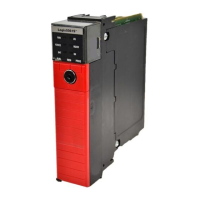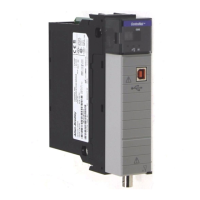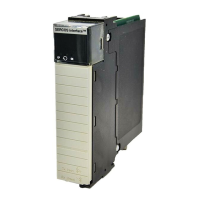Geometries with orientation support
170 Rockwell Automation Publication MOTION-UM002F-EN-P - February 2018
Parameter in Coordinate System dialog box Class name Attribute name Data type GSV SSV
Base Plate dimension: Rb CoordinateSystem BaseOffset1 REAL Yes Yes
Base Plate dimension: Re CoordinateSystem EndEffectorOffset1 REAL Yes Yes
Swing Arm Offset: D3 CoordinateSystem EndEffectorOffset3 REAL Yes Yes
See also
Base and Effector Plate dimensions for Delta J1J2J3J6 robot on page 167
Swing Arm Offsets for Delta J1J2J3J6 robot on page 168
For Delta robot geometries, the internal transformation equations in the Logix
Designer application assume:
• Joints (J1, J2, and J3) are at 0
when link L1 is horizontal in the XY plane.
• As each top link (L1) moves downward, its corresponding joint axis (J1, J2,
or J3) is rotating in the positive direction.
• Joint 6 axis of rotation is aligned with Z axis of the base frame. When J6 is at
0
, End of Arm (EOA) frame is rotated by 180 on Rx (Z axis pointing
down) with respect to base frame.
To have joints J1, J2, and J3 angular positions to be any value other than 0
when
L1 is horizontal, then configure the Zero Angle Orientation values on the
Geometry tab in the Coordinate System Properties dialog box to align the joint
angle positions with the internal equations.
For example, if the Delta robot is mounted so that the joints attached at the top
plate are homed at 10
in the positive direction below horizontal and you want
the robot's coordinate system actual position tag values to be zero in this position,
then enter -10
in the Z1, Z2, and Z3 parameters on Geometry tab. The Z6
offset is used to set J6 axis other than default 0
position.
Orientations for Delta J1J2J3J6
robot

